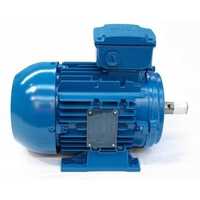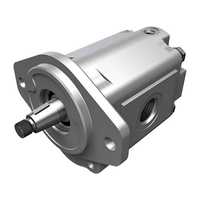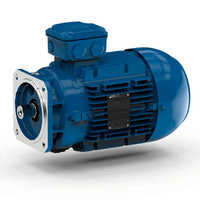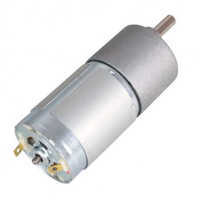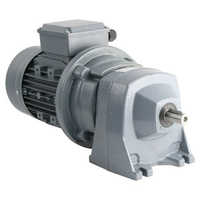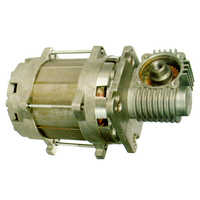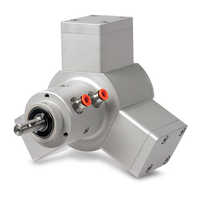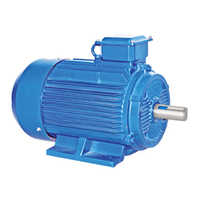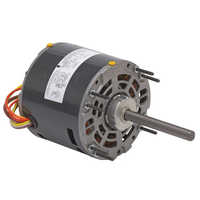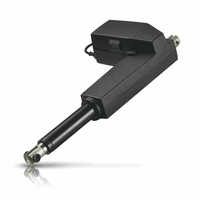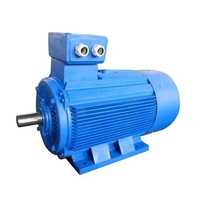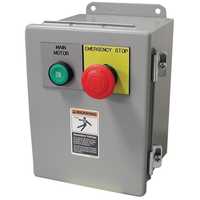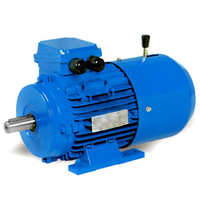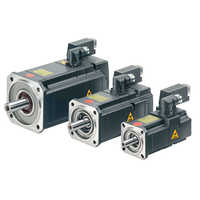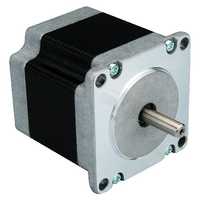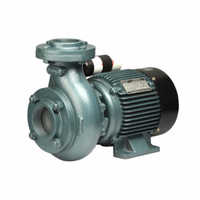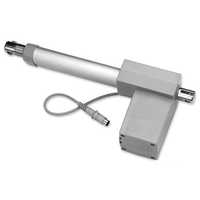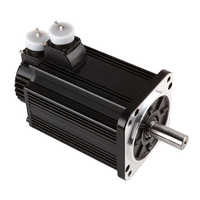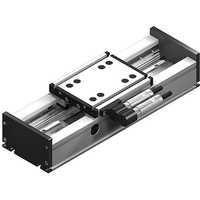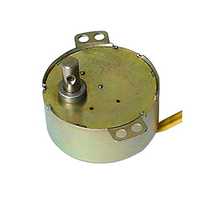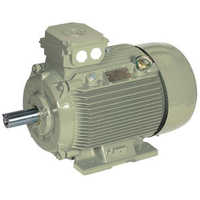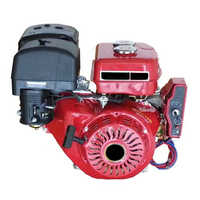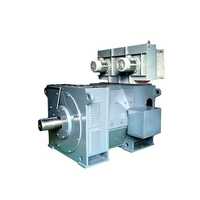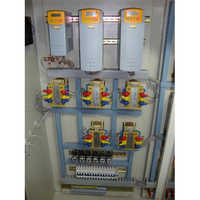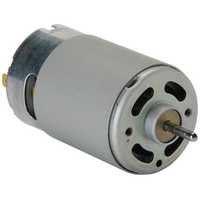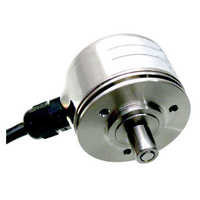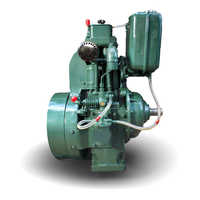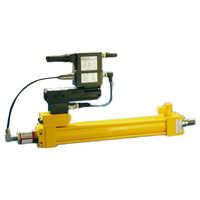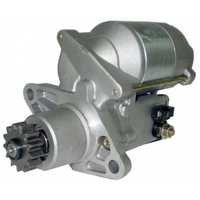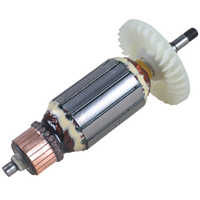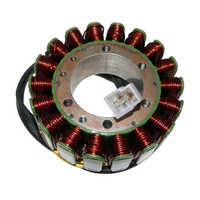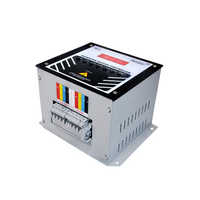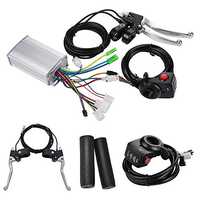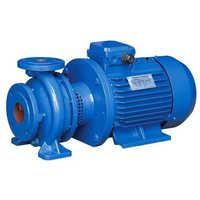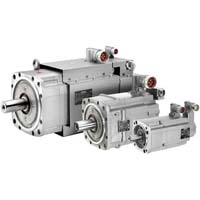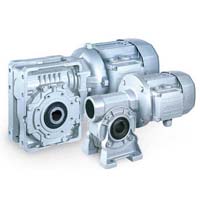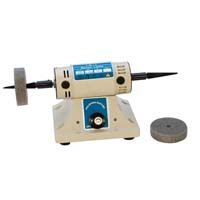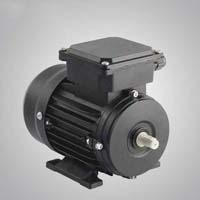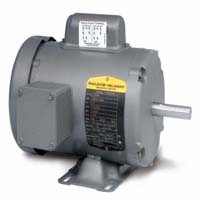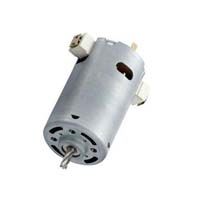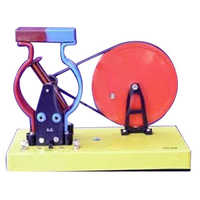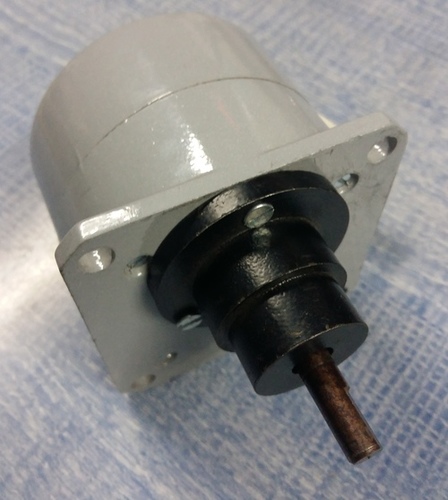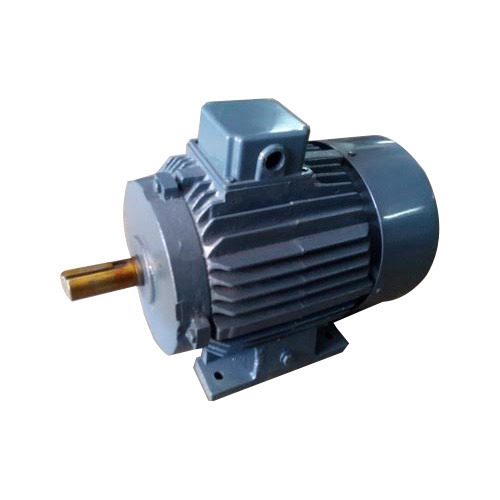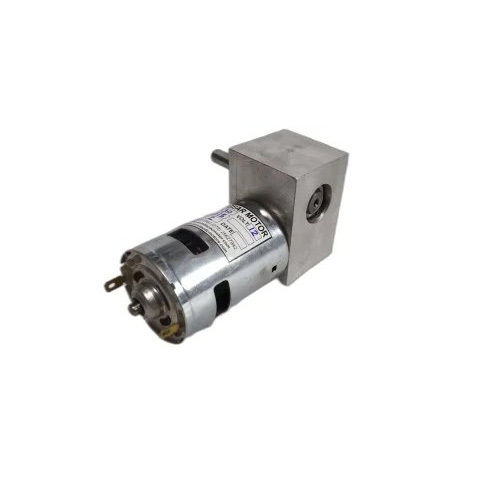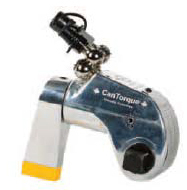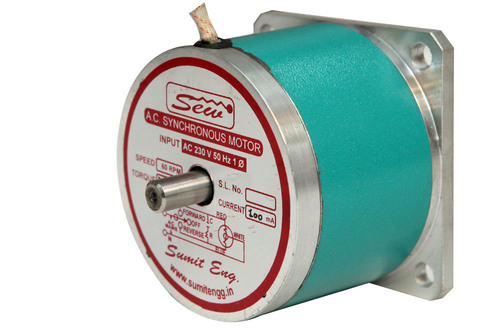Electric Motors & Engines
(12736 products)
Electric motors convert electrical energy into mechanical energy, finding widespread applications across industries. They operate based on the interaction between their magnetic field and electric current, generating torque on their shaft. Electric motors can be powered by direct or alternating current sources and are available in various types, including portable, DC, AC, and high-speed motors. Their versatility makes them essential components in numerous devices and machinery.
...show moreAn electric motor is a machine that converts electrical energy into mechanical energy.
Electric motors work by using the interaction between a magnetic field and electric current to generate force.
There are two main types of electric motors: DC motors and AC motors.
Electric motors are used in a wide variety of applications, including industrial machinery, household appliances, and transportation.
Electric motors are efficient, reliable, and relatively inexpensive to operate.
Top Electric Motors & Engines Categories
Explore More Categories
Product Showcase
Yaskawa Servo Motor Phase: Three Phase
Price: 50000 INR (Approx.)/Piece
MOQ - 1 Piece/Pieces
Product Type - Servo Motor
Phase - Three Phase
17 Years
Business Type: Manufacturer | Supplier
MIFA SYSTEMS PVT. LTD.
Indian Inquiries Only
Made in India
Remi Rq 40 Plus Direct Drive Stirrer, Model Number: RQ 40 Plus
14 Years
Business Type: Manufacturer | Supplier
REMI ELEKTROTECHNIK LIMITED
Brushless Motor With Controller
Price: 1200000 INR (Approx.)/Pack
MOQ - 1 Pack/Packs
10 Years
Business Type: Manufacturer | Distributor
DIDAC INTERNATIONAL
Verified Exporter
( Accepts only Foreign Inquiry)
Made in India
Black And Silver Autonics Rotary Encoder E50S8-1024-3-T-1
Price: 5300 INR (Approx.)/Piece
MOQ - 1 Piece/Pieces
Color - Black and Silver
Product Type - Rotary Encoder , Other
Starting Type - Electric Start
14 Years
Business Type: Manufacturer | Distributor
FUTURISTIC TECHNOLOGIES
Indian Inquiries Only
Made in India
Bldc Motor With Controller
4 Years
Business Type: Manufacturer | Exporter
EXCELLA ELECTRONICS
Made in India
Grey Electric Motor Casting Parts
MOQ - 10 Kilograms/Kilograms
Poles Number - 4, 8, 6, 10, 12
Pressure - Low Pressure
Product Type - Induction Motor
16 Years
Business Type: Manufacturer | Exporter
M. K. INDUSTRIES
Made in India
Industrial Electric Motor - Color: Blue
Price: 10000 (Approx.)/Piece
MOQ - 10 Piece/Pieces
Sealed Type - Packing seal
Protect Feature - Drip-Proof
Starting Type - Electric Start
18 Years
Business Type: Manufacturer | Distributor
CREATIVE ENGINEERS
Made in India
Delta 750 Watts Servo Motors
5 Years
Business Type: Manufacturer | Supplier
NANO TECHNOLOGIES
Indian Inquiries Only
Made in India
Stepper Drive
10 Years
Business Type: Manufacturer | Supplier
SUCCESS TECHNOLOGIES
Made in India
Servo System
14 Years
Business Type: Manufacturer | Distributor
PROCON TECHNOLOGIES PVT. LTD.
Explosion Proof Motors
14 Years
Business Type: Manufacturer | Supplier
NORD DRIVESYSTEMS PVT. LTD.
Made in India
Industrial Dehumidifier Motor
Price Trend: 70000 - 2000000 INR (Approx.)/Piece
MOQ - 1 Piece/Pieces
10 Years
Business Type: Manufacturer | Supplier
REHOBOTH ENVIRO SYSTEMS PVT LTD
Hiwin Linear Actuators
Price Trend: 1000.00 - 10000.00 INR (Approx.)/Piece
MOQ - 1 Piece/Pieces
12 Years
Business Type: Distributor
VICTOR ENTERPRISE
Indian Inquiries Only
Made in India
Brake Motor
6 Years
Business Type: Distributor | Exporter
DYNAMIC PRODUCTS
Indian Inquiries Only
Made in India
Long-term Operational Industrial Use Absolute Encoder
Price: 25000 INR (Approx.)/Piece
MOQ - 2 Piece/Pieces
Product Type - Other, Absolute Encoder
Output Power - 5-10 , 10-30 Volt (v)
Protect Feature - Waterproof
15 Years
Business Type: Exporter | Trading Company
KHUSHALI ENTERPRISE
Made in India
Flame Proof Motors
11 Years
Business Type: Manufacturer | Exporter
GUJARAT PLUG-IN DEVICES PVT. LTD.
Made in India
Industrial Kubler Rotary Encoder
7 Years
Business Type: Manufacturer | Distributor
ORCHID TECHNOLOGY
Made in India
Silver Rolling Shutter Motors
Price Trend: 5000.00 - 8300.00 INR (Approx.)/Piece
MOQ - 1 Piece/Pieces
Product Type - Asynchronous Motor
Protect Feature - Totally Enclosed
Phase - Single Phase
11 Years
Business Type: Manufacturer | Distributor
VIJAY SHUTTER ENTERPRISES
Made in India
Electric Rotor
16 Years
Business Type: Manufacturer | Exporter
ASCENT MACHINERIES & ENGG. SERVICES
Made in India
2 Kw Panasonic Ac Servo Motor Phase: Double Phase
MOQ - 10 Unit/Units
Sealed Type - Mechanical Seal
Protect Feature - Drip-Proof
Phase - Double Phase
1 Years
Business Type: Manufacturer | Distributor
Cess Automation India LLP
Made in India
Control Motors
Price Trend: 10000 - 1000000 INR (Approx.)/Piece
MOQ - 10 Piece/Pieces
12 Years
Business Type: Manufacturer | Distributor
KPT INDUSTRIES LIMITED
Made in India
Ac Motors
18 Years
Business Type: Manufacturer | Exporter
LAKSHMI ELECTRO CONTROLS & AUTOMATION
Indian Inquiries Only
Radial Piston Motors
Price: 10000.00 INR (Approx.)/Piece
MOQ - 1 Piece/Pieces
8 Years
Business Type: Manufacturer | Service Provider
PJS ENGINEERS
Indian Inquiries Only
Made in India
Gray Helical Geared Motor With Electric Motor For Conveyor Application
Price: 12000 INR (Approx.)/Piece
MOQ - 1 Piece/Pieces
Color - Gray
Product Type - Other, HELICAL GEARED MOTOR
Frequency (MHz) - 50 Hertz (HZ)
3 Years
Response Rate: 91.67%
Business Type: Manufacturer | Distributor
GAMMA GEARS
Made in India
Black Delta Servo Motor
Price: 4000 INR (Approx.)/Piece
MOQ - 2 Piece/Pieces
Color - Black
Product Type - Servo Motor
Phase - Single Phase
12 Years
Business Type: Service Provider | Trading Company
ZENTECH AUTOMATION
Indian Inquiries Only
Made in India
C Frame Motors 230V
Product Type - C Frame Motors, Other
2 Years
Business Type: Distributor | Trading Company
The Refrigeration House
High Performance Hydraulic Motors
13 Years
Business Type: Distributor | Exporter
VNM HYDROTEK
Made in India
Black Open Circuit Reverse Displacement Motors
Price Trend: 20000.00 - 70000.00 INR (Approx.)/, Unit
MOQ - 1 , Unit/Units
Weight - 15-100 Kilograms (kg)
Product Type - Reverse Displacement Motors
Max Pressure - 200-450 Bar
9 Years
Business Type: Distributor
INTEGRATED HYDRO SYSTEMS
Electric Motors & Engines Manufacturers | Suppliers in India
| Company Name | Location | Member Since |
|---|---|---|
| Creative Engineers | Ahmedabad, India | 18 Years |
| Lakshmi Electro Controls & Automation | Bengaluru, India | 18 Years |
| Mifa Systems Pvt. Ltd. | Ahmedabad, India | 17 Years |
| M. K. Industries | Ahmedabad, India | 16 Years |
| Ascent Machineries & Engg. Services | Mumbai, India | 16 Years |
| Khushali Enterprise | Mumbai, India | 15 Years |
| Remi Elektrotechnik Limited | Mumbai, India | 14 Years |
| Futuristic Technologies | Ahmedabad, India | 14 Years |
| Procon Technologies Pvt. Ltd. | Ahmedabad, India | 14 Years |
| Nord Drivesystems Pvt. Ltd. | Pune, India | 14 Years |
Explained Electric Motors & Engines
Simply put, an electric motor is a mechanism that uses electricity to generate mechanical motion. Most electric motors function as a result of the interaction between the magnetic field of the motor and the electric current in the wire winding. According to Faraday's Law, this interaction exerts a force on the motor's shaft in the form of torque.
Direct current (DC) sources, like batteries or rectifiers, can be used to power electric motors. Alternating current (AC) sources include things like power grids, electric generators, and inverters.
If it weren't for the invention of the motor, we'd still be using electricity for nothing more than powering light bulbs in the style of Sir Thomas Edison.
Vehicles, railroads, power tools, fans, air conditioning, home appliances, computer disk drives, and many more things all require electric motors. Even tiny motors can be found in some battery-operated wristwatches.
The History
In 1821, British scientist Michael Faraday described how a conductor carrying an electric current might be turned into a mechanical energy source by placing the wire in a magnetic field and using the torque created by the electrical current and field to cause the conductor to rotate.
One more British scientist, William Sturgeon, used his idea to create the first machine in 1832—a DC (Direct Current) machine, the most basic type of electric motor. However, his prototype was too costly for its limited utility.
The first electrical motor was created by physicist Frank Julian Sprague later in 1886. That could maintain a fixed rotational speed over a wide variety of loads, producing a driving force.
Types of Electric Motors and Engines
1. Stepper Motors
In stepper Electric Motors & Engines, the rotor is located on the inside and is controlled electronically by magnets on the outside. Permanent magnets or a flexible metal can be used to construct the rotor. When the windings are turned on, the teeth on the rotor line up with the magnetic field. Because of this, they can go from one location to another at a consistent rate. It's important to weigh the pros and cons of the various motors before beginning development on a new system. Picking the proper motor is a great first step in completing any task.
2. Servo motors
Servo motors are the workhorses of robotics, since they consist of any motor combined with a feedback sensor to aid in positioning. Actuators, both rotary and linear, are implemented. Although inexpensive brushed DC motors have been widely used up until recently, high-performance brushless AC motors are now the norm.
3. Liner Motors
These electric motors have a stator and a motor that have been unrolled, allowing them to generate linear force along the device's length. They differ from cylindrical designs in that their "active" section is flat and has two ends. In comparison to rotatory motors, they tend to be quicker and more precise.
4. Direct Drive
When traditional servo motors and transmissions are replaced with direct drive, the result is increased efficiency and decreased wear. These motors accelerate quicker and are much simpler to maintain over time.
5. DC Brushless Motor
DC brushless motors were originally designed to outperform DC brushed motors while taking up less room. They are also more compact than equivalent AC motors. When a slip ring or commutator is not present, an integrated controller is used to allow for operation.
6. DC Brushed Motors
Brush orientation on the stator of a DC brushed motor is what controls the direction of current flow. Instead, the orientation of the brush with respect to the individual segments of the rotor bar is critical in some types. Every DC brushed motor layout relies heavily on the commutated.
7. AC Brushless Motors
Popular in the field of motion control are AC brushless motors. The stator generates a spinning magnetic field, and the rotor is inducted into that field to cause simultaneous rotation. To function, they need constant access to electromagnets.
How To Choose The Best Electric Motors & Engines
1. Current
Since current provides the energy for the motor's operation, excessive amounts of it might cause malfunction. Operating and stall current are crucial for DC motors. The operating current of a motor is the average amount of power it is designed to use at a certain torque setting. As the name implies, stall current provides enough torque to keep the motor spinning at zero revolutions per minute (RPM). When multiplied by the rated voltage, this is the maximum power that the motor should be able to produce by drawing from the electrical supply. To prevent the coils from melting, a heat sink must be used when operating the motor continuously or at a voltage higher than the rated value.
2. Voltage
Its purpose is to prevent the flow of current from reversing and to overcome any existing back current. When the voltage is increased, the torque is also increased. The maximum recommended operating voltage for a DC motor is indicated by the motor's voltage rating. Always use the specified voltage.
Consider both the operating and stall numbers beside the torque. Stall torque is the amount of torque produced when power is provided at the stall speed, and operating torque is the amount of torque the motor is able to provide in normal operation.
3. Velocity
Calculating motor speed (in revolutions per minute) can be a challenge. Even while higher speeds are ideal for motor efficiency, they aren't always achievable due to the need for gearing. The motor's efficiency will go down if you add gears, so you'll need to think about slowing down and losing some torque.
4. Motor Function
Prioritizing motor performance took a back seat to understanding the factors of an application that could limit the motor type selection. Can you describe the function(s) of the motor in this context? The functionality of a motor can be evaluated in terms of its speed and torque, its starting/stalling torque, and its duty cycle or load profile. Motor size is determined in part by the speed and torque output needed to run the application.
5. Specifications of The Motor
When evaluating potential new projects, motor housing design is often one of the first factors to be thought about. As the designer, you need to know how much weight and space the product can take up in order to do its job.
A long, thin motor may be needed for one task, whereas a shorter, fatter motor may be more suited to another. The choice of motor might be impacted by whether or not the application requires a lightweight product.
Do you require a motor that runs for 10,000 hours without any maintenance, or will you only be using it for 200 hours over the next 20 hours? The brushes, the commutator, and the bearings are the primary potential failure points of a motor.
Environment
The vast majority of motors on store shelves are designed to operate in standard conditions. If the motor will be exposed to dust or water as a result of the project's specifications, the designer should think about using a motor designed for environmentally sensitive applications. An additional thing to think about while making your motor selection is the typical outside temperature.
How Electric Motors & Engines work
There are two approaches of working electric motors and engines. The first is to employ alternating current, a type of electric current in which the direction of flow alternates at regular intervals (AC). One better method is to attach a commutator to either end of the coil, as is done in battery-operated motors like the ones we use around the house. (Don't be put off by the useless technical name; this slightly dated word "commutation" is similar to the word "commute").
Much like how "commute" can indicate "to travel back and forth," "switch" simply implies "to alter." The commutator's primary function is to flip the direction of the electric current in the coil at regular intervals, typically every half turn of the coil's rotation.
Half of the commutator is connected to one end of the coil. The terminals on the motor are wired to receive power from the battery. Brushes, which can be formed from bits of graphite (soft carbon like pencil "lead") or thin lengths of springy metal, "brush" against the commutator to transfer electrical current. The commutator ensures that the coil always spins in the same direction when current is passed through the circuit.
Conclusion
As the name implies, electric motors use electricity to create motion. Most of them generate torque on the motor shaft by the interplay of the motor magnetosphere and electrical current in a coiled wire. The rotor and the stator are the heart and soul of any motor. They can be powered by either direct or alternating current. Induction motors, servo motors, three-phase motors, and industrial motors are just a few of the various varieties of electric motors available. They find application in a wide variety of vehicles, including electric ones, air conditioners, ships, and hydraulic machinery.
FAQs: Electric Motors & Engines
Q. What is the difference between engine and electric motor?
Ans. While a motor can only convert electrical energy into mechanical form, an engine can convert it along with multiple others.
Q. Why are electric motors better than engines?
Ans. Vehicles powered by electric motors are far more fuel efficient than those powered by conventional internal combustion engines (ICEs). When compared to a gas combustion engine, which converts less than 40% of its fuel into mechanical energy (in the form of motion), electric motors are more efficient.
Q. What are the pros and cons of electric motors?
Pros:
- Since they have more moving parts, electric motors last longer.
- Electric motors can operate for up to 30,000 hours with regular servicing.
Cons:
- Large electric motors are cumbersome to relocate and demand careful attention to the supply voltage and current.
- In other circumstances, remote areas without access to electricity require expensive line additions.
Q. Are electric engines better?
Ans. Yes, In addition to being more environmentally friendly, electric motors are also more productive.
Related Categories
Brass Electrical & Electronic Components
Bulbs & Tubelight
Cable Terminal, Lugs & Socket
Cable Trays
Cables/Cable Accessories & Conductors
Calculator
Capacitors
Chargers
Circuit Boards
Circuit Breaker
Commercial Field
Control Panel Boards
Dc Power Supplies
Decorative Lights
Diesel Generator Sets
Doorbell
ESD Products & Equipment
Earthing Electrodes
Electric Motors & Engines
Electric Power Tools
Electrical / Lighting Products & Components
Electrical Enclosures
Electrical Goods, Equipment & Supplies
Electrical Outlets
Electrical Product Agent
Electrical Safety Products
Electrical Testing & Measuring Equipment
Electrical Transmission Line Goods
Electro Magnets
Electro Stampings
Electronic Data Systems
Electronic Enclosures
Electronic Instrument
Electronic Liquid Level Controllers & Indicators
Electronic Products & Components
Electronic Safe
Electronic Signs & Sign Board
Electronic Testing Equipment
Electronics Agents
Electronics Stocks
Emergency & Safety Lights
Energy Saving Devices
Fibreglass Cable
Financial Field
Flashlights
Flood Light
Frames & Display
Generator Parts & Accessories
Generators
Heat Resistance Wire
Home Automation Systems
Industrial Automation
Insulation Material
Insulation Paper
Inverters & Ups Equipment
Jacks
LED Displays
LED Products
Lamps & Lampshades
Laser
Light Fittings & Fixtures
Lightning Protection System
Mobile Phones, Accessories & Parts
Outdoor Lighting
Plastic Enclosures
Plastic Welding Equipment
Power Cable Accessories
Power Supplies
Power Transmission Equipment
Pressure Switches
Public Address Systems
Radio & TV
Radio & TV Equipment
Rectifiers
Relays
Residential Lighting
Semiconductors
Sensors
Speakers & Speaker Parts
Stainless Steel Wires & Cables
Switchboard
Switches
Switchgear & Allied Products
TV Picture Tubes
Transformer & Transformer Components
Turbine
Voltage Stabilizers
Water Heater
Welding Equipment
Wires/Cables & Accessories
Wiring Harness
